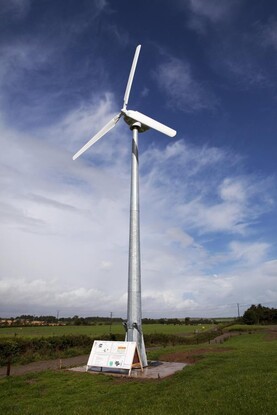In August 2018, the Department released a future agricultural policy framework document built around four key outcomes of increased productivity, improved resilience to external shocks, environmental sustainability and the operation of a responsive supply chain.
While there has been some tinkering with the definitions, those four outcomes still form the building blocks for the latest version of the framework, published last Tuesday.
In truth, the document released last week doesn’t tell us much that we didn’t already know, and it will be later in the year before we get sight of the detailed policy proposals.
But significant changes look inevitable, and outside of the EU, farmers will have to do more to justify payments from the British Treasury going forward.
The general thrust of DAERA thinking is that area payments will be gradually scaled back, with money redirected mainly into agri-environment-type measures and schemes. However, area payments will remain (a resilience measure) but set at a level so as not to mask technical inefficiency.
What that means in practice is not yet clear. At present, area payments are worth about £120/acre, which is a level no farmer can afford to ignore. Linking the payment to various cross compliance rules is also an easy way for DAERA to keep all farmers in line.
But if a new resilience payment, also linked to various rules, is set at too low a level, there is a real risk that a significant number of farmers who are fed up with multiple inspections over the years, will not apply.
The other resilience type measure included in the latest DAERA document are headage payments for sucklers and sheep. These payments were not part of the DAERA plan from 2018, but is something favoured by Agriculture Minister Edwin Poots as a means of targeting direct support. It will take an innovative headage scheme to avoid either distorting the market, or burying farmers in more red tape.
Read more
New payment to be based on soil testing
Farmer fury over NI climate targets
In August 2018, the Department released a future agricultural policy framework document built around four key outcomes of increased productivity, improved resilience to external shocks, environmental sustainability and the operation of a responsive supply chain.
While there has been some tinkering with the definitions, those four outcomes still form the building blocks for the latest version of the framework, published last Tuesday.
In truth, the document released last week doesn’t tell us much that we didn’t already know, and it will be later in the year before we get sight of the detailed policy proposals.
But significant changes look inevitable, and outside of the EU, farmers will have to do more to justify payments from the British Treasury going forward.
The general thrust of DAERA thinking is that area payments will be gradually scaled back, with money redirected mainly into agri-environment-type measures and schemes. However, area payments will remain (a resilience measure) but set at a level so as not to mask technical inefficiency.
What that means in practice is not yet clear. At present, area payments are worth about £120/acre, which is a level no farmer can afford to ignore. Linking the payment to various cross compliance rules is also an easy way for DAERA to keep all farmers in line.
But if a new resilience payment, also linked to various rules, is set at too low a level, there is a real risk that a significant number of farmers who are fed up with multiple inspections over the years, will not apply.
The other resilience type measure included in the latest DAERA document are headage payments for sucklers and sheep. These payments were not part of the DAERA plan from 2018, but is something favoured by Agriculture Minister Edwin Poots as a means of targeting direct support. It will take an innovative headage scheme to avoid either distorting the market, or burying farmers in more red tape.
Read more
New payment to be based on soil testing
Farmer fury over NI climate targets






 This is a subscriber-only article
This is a subscriber-only article









SHARING OPTIONS: